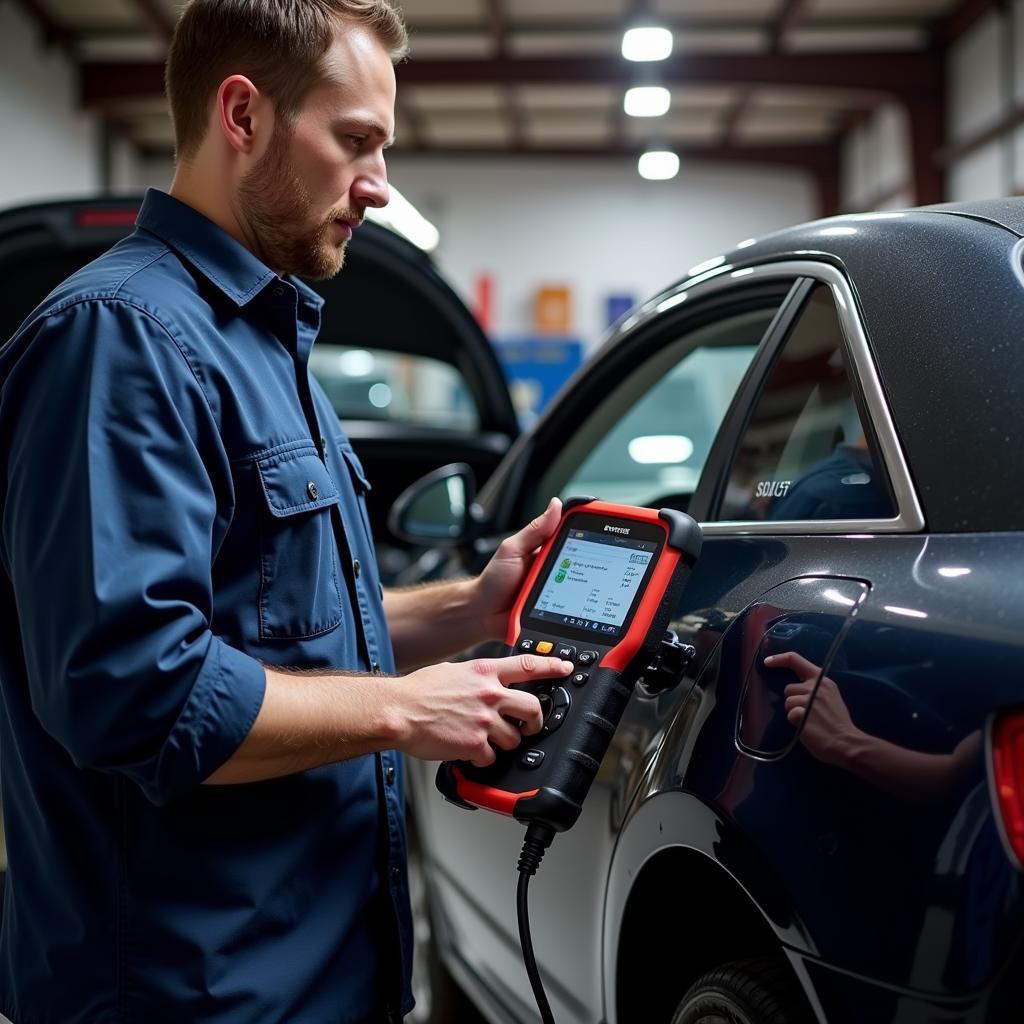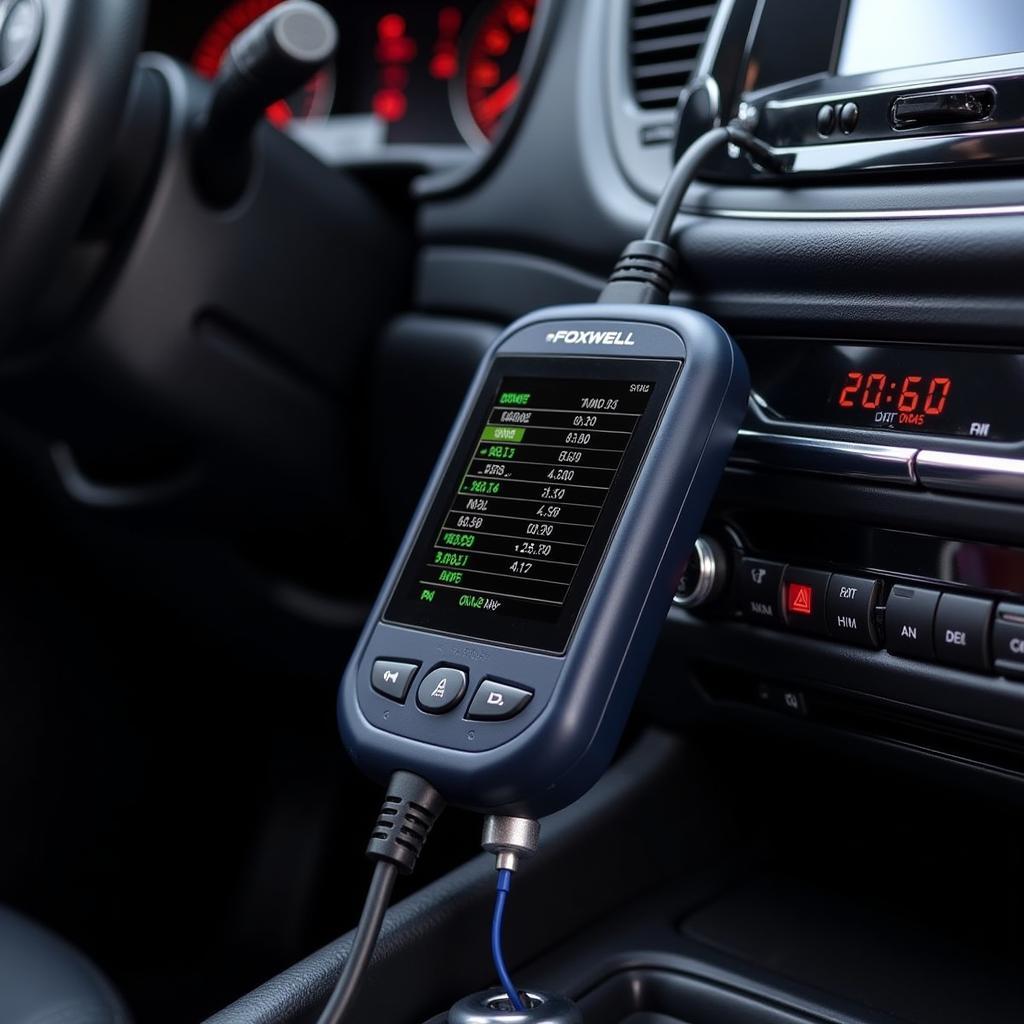Will Foxwell NT520 read OBD1? This is a common question among car owners and mechanics dealing with older vehicles. While the Foxwell NT520 is a powerful diagnostic tool known for its wide vehicle coverage, its OBD1 capabilities require clarification. This article will delve into the specifics of OBD1 compatibility with the Foxwell NT520, exploring workarounds, alternative solutions, and providing valuable insights for diagnosing older vehicles.
Understanding OBD1 and its Challenges
Before we address the Foxwell NT520’s compatibility with OBD1, let’s understand what OBD1 is. OBD1 (On-Board Diagnostics 1) refers to the early generations of onboard diagnostic systems, primarily used in vehicles manufactured before 1996. Unlike the standardized OBD2 system, OBD1 varied significantly between manufacturers, making diagnosis more complex. Each manufacturer had its own diagnostic connector, protocols, and trouble codes. This lack of standardization presents a challenge for modern diagnostic tools designed primarily for OBD2.
Foxwell NT520 and OBD1 Compatibility: Addressing the Core Question
The Foxwell NT520 is primarily designed for OBD2 systems. While it doesn’t directly support all OBD1 systems, it can be used with certain older vehicles via manufacturer-specific adapters. These adapters bridge the gap between the NT520’s OBD2 interface and the vehicle’s OBD1 diagnostic connector. However, the availability of these adapters and their compatibility with specific car makes and models vary. It’s essential to research and confirm compatibility with your specific vehicle before attempting to use the NT520 for OBD1 diagnostics.
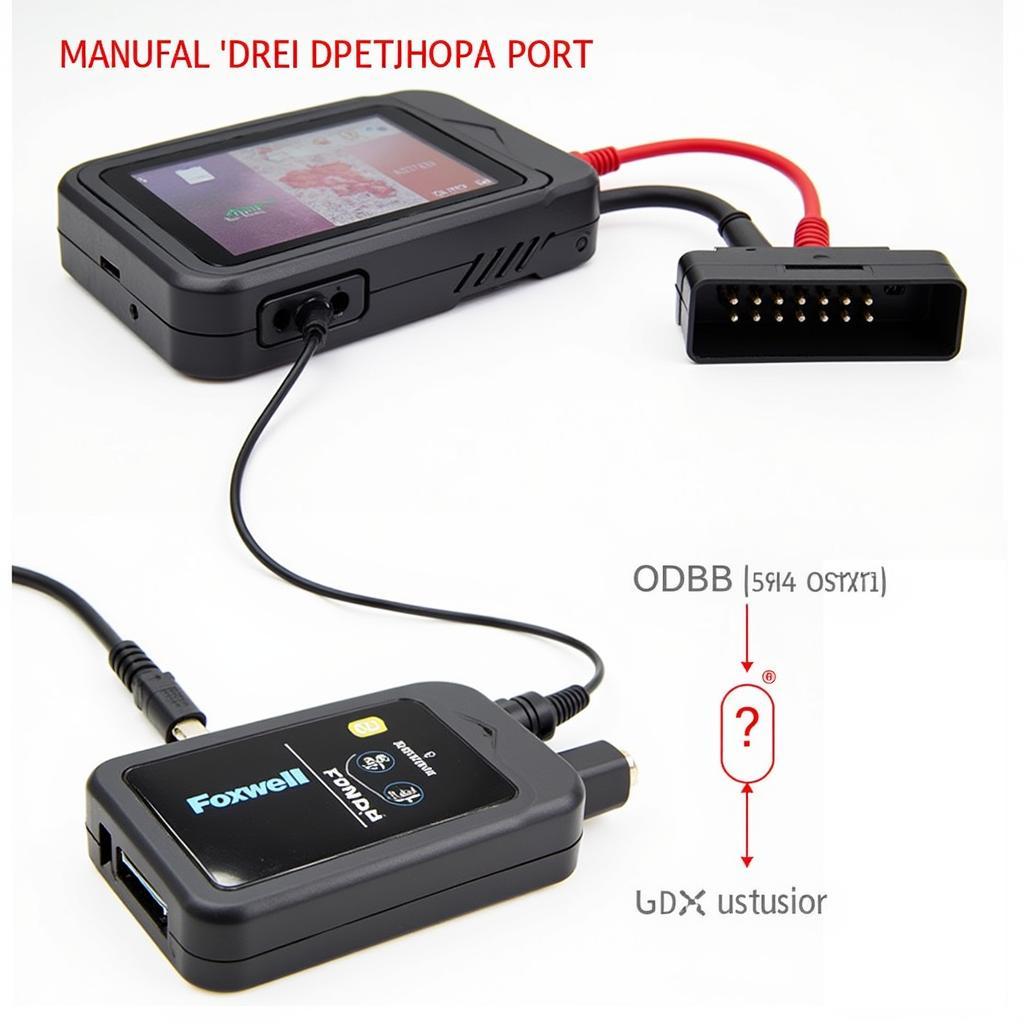 Foxwell NT520 connected to an OBD1 adapter
Foxwell NT520 connected to an OBD1 adapter
Alternative Solutions for OBD1 Diagnostics
If the Foxwell NT520, even with adapters, isn’t compatible with your specific OBD1 system, several alternative diagnostic solutions exist. Dedicated OBD1 scanners are available for specific car manufacturers, offering comprehensive diagnostic capabilities for older vehicles. These scanners are designed to interpret manufacturer-specific trouble codes and provide detailed diagnostic information. Another option is to use manufacturer-specific diagnostic software, which can be accessed through a laptop and a compatible interface cable.
Choosing the Right Diagnostic Approach for Your OBD1 Vehicle
Selecting the appropriate diagnostic approach depends on several factors, including the specific make and model of your vehicle, your budget, and your technical expertise. For occasional use and straightforward diagnostics, a dedicated OBD1 scanner might be the most cost-effective and user-friendly option. However, for professional mechanics or enthusiasts working with a wide range of older vehicles, investing in manufacturer-specific software and interfaces might offer greater flexibility and depth of diagnostic information.
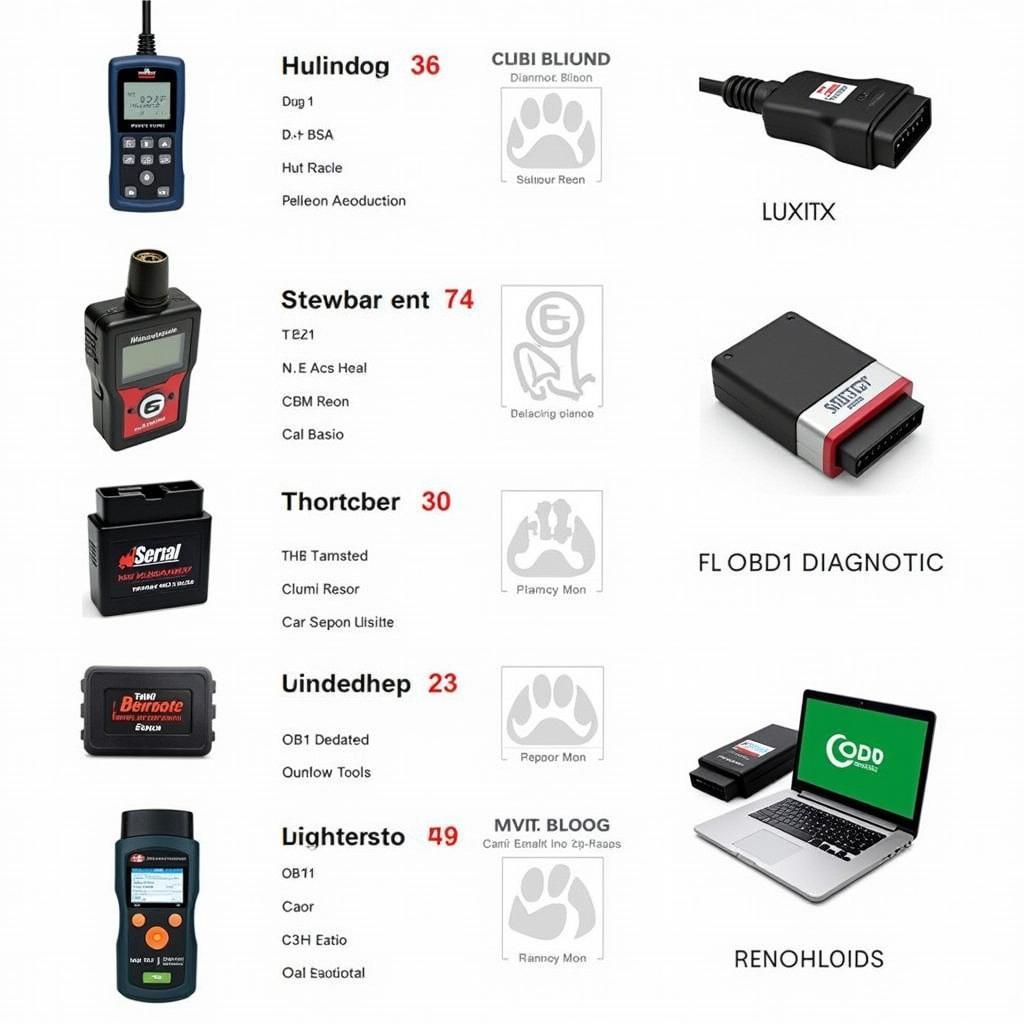 Comparing different OBD1 diagnostic tools
Comparing different OBD1 diagnostic tools
Tips and Tricks for Diagnosing OBD1 Systems
Diagnosing OBD1 systems can be challenging, even with the right tools. Here are a few tips to enhance your diagnostic process:
-
Consult Vehicle-Specific Repair Manuals: These manuals provide invaluable information on diagnostic procedures, trouble codes, and wiring diagrams tailored to your vehicle.
-
Understand Manufacturer-Specific Systems: Familiarize yourself with the quirks and nuances of the OBD1 system used in your specific vehicle make and model.
-
Check for Common Issues: Many OBD1 problems are related to simple issues like vacuum leaks, faulty sensors, or wiring problems. Start by checking these common culprits before diving into more complex diagnostics.
Will a Foxwell Scanner Work on My Classic Car? Decoding OBD1 Compatibility
So, will a Foxwell scanner, specifically the NT520, work on your classic car? The answer isn’t always straightforward. While the NT520 itself is geared towards OBD2, the possibility of using it with an adapter provides a potential pathway to diagnose some OBD1 systems. However, meticulous research on adapter compatibility with your specific vehicle is crucial. Remember, dedicated OBD1 scanners or manufacturer-specific software and interfaces often present more reliable and comprehensive solutions for diagnosing these older vehicles.
Conclusion: Navigating the World of OBD1 Diagnostics with the Foxwell NT520
The Foxwell NT520 is a valuable tool for modern vehicles, but its OBD1 capabilities are limited. While adapters offer a potential solution in some cases, they don’t guarantee compatibility with all OBD1 systems. For comprehensive OBD1 diagnostics, consider dedicated OBD1 scanners or manufacturer-specific software and interface cables. Understanding the nuances of OBD1 systems and researching your vehicle’s specific requirements are key to successful diagnostics. For expert advice and assistance with your automotive diagnostic needs, connect with us at ScanToolUS. You can reach us by phone at +1 (641) 206-8880 or visit our office at 1615 S Laramie Ave, Cicero, IL 60804, USA.
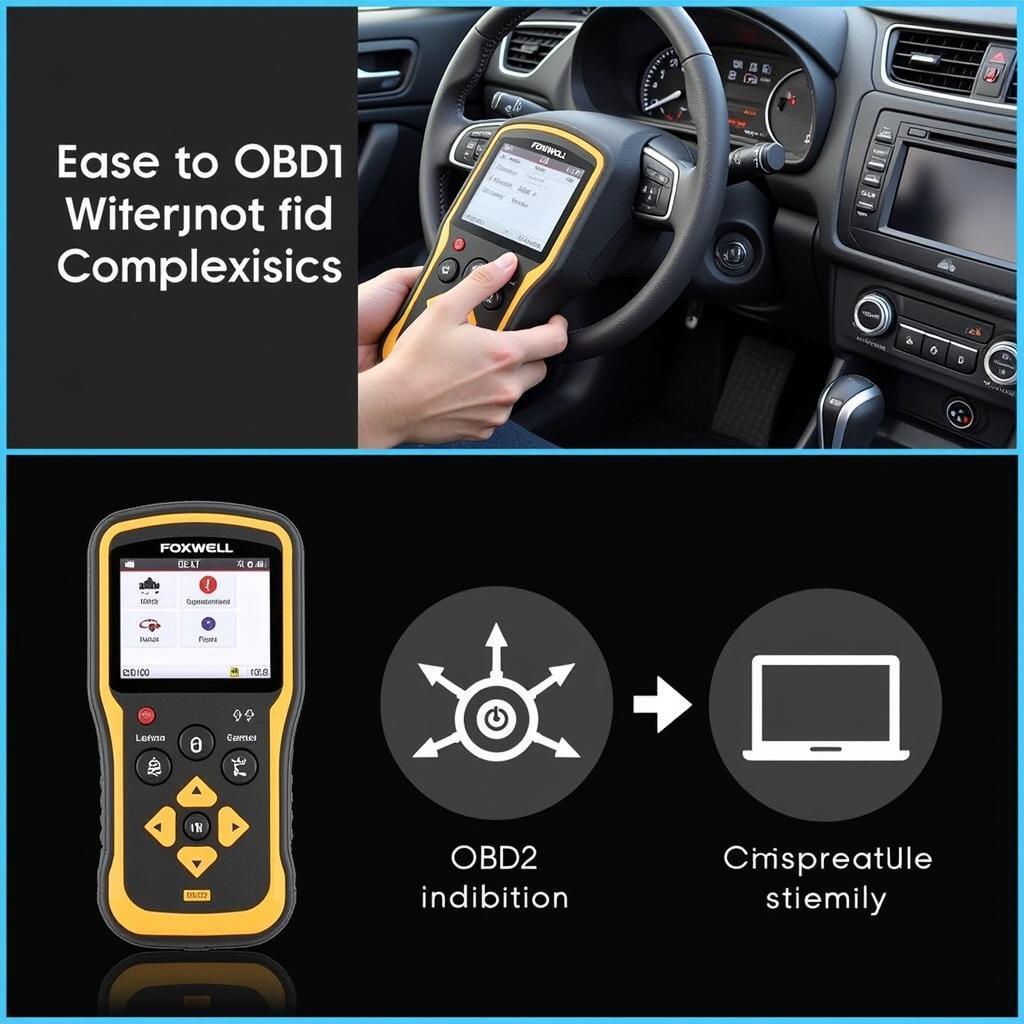 Foxwell NT520 being used for OBD2 diagnostics
Foxwell NT520 being used for OBD2 diagnostics
FAQ
-
Does the Foxwell NT520 directly read OBD1 codes? No, it requires a manufacturer-specific adapter.
-
What are the best alternatives for diagnosing OBD1 systems? Dedicated OBD1 scanners or manufacturer-specific software.
-
Where can I find OBD1 adapters for the Foxwell NT520? Check with Foxwell directly or reputable automotive tool suppliers.
-
Why is OBD1 diagnostics more complex than OBD2? Lack of standardization among manufacturers.
-
What are some common problems in OBD1 systems? Vacuum leaks, faulty sensors, and wiring issues.
-
Are there any free OBD1 diagnostic tools? Limited free options exist; most reliable tools are paid.
-
Where can I get help with diagnosing my specific OBD1 vehicle? Contact ScanToolUS for expert assistance.

